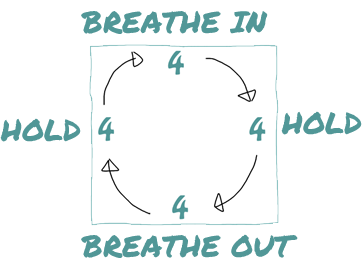Health benefits of correct breathing



Many of us are feeling the compounding effects that lockdown is having on our mental and physical health, and we are looking for ways to alleviate the pressure.
Now may be a good time to learn about the power of breathing exercises. They have been show to help reduce stress and anxiety and, if practiced regularly, will help your mental and physical wellbeing.
The majority of us are unaware that we rarely utilise our lungs to their full capacity; in one of our earlier publications, we explained how breathing exercises that aim to improve the depth of our breath can help support us through the symptoms of a respiratory illness like Covid-19.
Once you become aware of how to harness the power of your breath through simple exercises, you will be able to call on it as an invaluable ‘go to’ tool that you can use anywhere as part of your health and wellbeing armoury.
 Get into a comfortable position while sitting up straight. Be sure to relax your face, jaw, neck and shoulders. Try to keep your upper body still through the whole exercise and expand your stomach as you breathe in.
Breathe in through your nose, inhaling for the count of 4, hold your breath for the count of 4, exhale through your nose for the count of 4, and then hold again for the count of four. Repeat this process for a minimum of 12 rounds, as long as you feel comfortable to do so.
Get into a comfortable position while sitting up straight. Be sure to relax your face, jaw, neck and shoulders. Try to keep your upper body still through the whole exercise and expand your stomach as you breathe in.
Breathe in through your nose, inhaling for the count of 4, hold your breath for the count of 4, exhale through your nose for the count of 4, and then hold again for the count of four. Repeat this process for a minimum of 12 rounds, as long as you feel comfortable to do so.
 The longer you can exhale, the more relaxing this exercise will be. Listen to the tone of the hum and play around with the sound inside your head and chest to help you find a sound that you are happy with. Try five to 10 breaths while humming on each breath out, and increase the number of breaths over time. You can practice until you feel good. Slowly increase your repetitions each week.
The longer you can exhale, the more relaxing this exercise will be. Listen to the tone of the hum and play around with the sound inside your head and chest to help you find a sound that you are happy with. Try five to 10 breaths while humming on each breath out, and increase the number of breaths over time. You can practice until you feel good. Slowly increase your repetitions each week.
The function of breathing
Breathing is an automatic body function that we rarely think much about in everyday life. Most of us ‘shallow-breathe’ without even knowing it, tending to only use the upper part of our lungs. This inefficient way of breathing can be seen by our shoulders and chest rising and falling as we breathe, resulting in stale breath being retained in the lower lobes of our lungs after we breathe out. Even when we are actively exercising, many of us don’t tend to use our lungs fully. In fact, some sports such as rowing or cycling, because of the position of our bodies (sitting and forward reaching), compromises our ability to use our lungs to their full capacity. Someone who needs control over their breath, such as a singer, athlete or professional sports person, will be much more aware of the importance of how they breathe. They will learn the importance of using the large, stronger muscle called the diaphragm and the short intercostal muscles that lie between our ribs to draw breath deep into their lungs. Deep breathing this way means that instead of your breath being drawn down vertically, with your chest filling with air and expanding upwards, the breath expands horizontally, with your stomach expanding outwards. Using these muscles gives you command over your breath.Try this breathing exercise
Sama Vritti (Box / square breathing)
This is a very simple exercise that can be used to focus your mind and cut out mental chatter. The aim of this exercise is to breath for the same count for each step of the breathing process. Get into a comfortable position while sitting up straight. Be sure to relax your face, jaw, neck and shoulders. Try to keep your upper body still through the whole exercise and expand your stomach as you breathe in.
Breathe in through your nose, inhaling for the count of 4, hold your breath for the count of 4, exhale through your nose for the count of 4, and then hold again for the count of four. Repeat this process for a minimum of 12 rounds, as long as you feel comfortable to do so.
Get into a comfortable position while sitting up straight. Be sure to relax your face, jaw, neck and shoulders. Try to keep your upper body still through the whole exercise and expand your stomach as you breathe in.
Breathe in through your nose, inhaling for the count of 4, hold your breath for the count of 4, exhale through your nose for the count of 4, and then hold again for the count of four. Repeat this process for a minimum of 12 rounds, as long as you feel comfortable to do so.
Try this breathing exercise
Brahmari (Humming-bee breath)
This exercise is focused on your exhalation, extending it and hearing the quality. Brahmari can be extremely calming, helping to ease tension in your shoulders, upper back, neck or throat. Adopt a comfortable position, if possible, sit cross-legged on the floor sitting on a cushion or blanket to elevate your hips. If this is uncomfortable, sit up straight in a chair and avoid leaning against the back rest. Begin with a full inhalation through your nose, keeping your lips lightly sealed and teeth slightly apart. When you exhale, make a continuous humming noise, ie, making the sound of the letter M. Keep making the sound until you need to inhale. The longer you can exhale, the more relaxing this exercise will be. Listen to the tone of the hum and play around with the sound inside your head and chest to help you find a sound that you are happy with. Try five to 10 breaths while humming on each breath out, and increase the number of breaths over time. You can practice until you feel good. Slowly increase your repetitions each week.
The longer you can exhale, the more relaxing this exercise will be. Listen to the tone of the hum and play around with the sound inside your head and chest to help you find a sound that you are happy with. Try five to 10 breaths while humming on each breath out, and increase the number of breaths over time. You can practice until you feel good. Slowly increase your repetitions each week.
Categories


